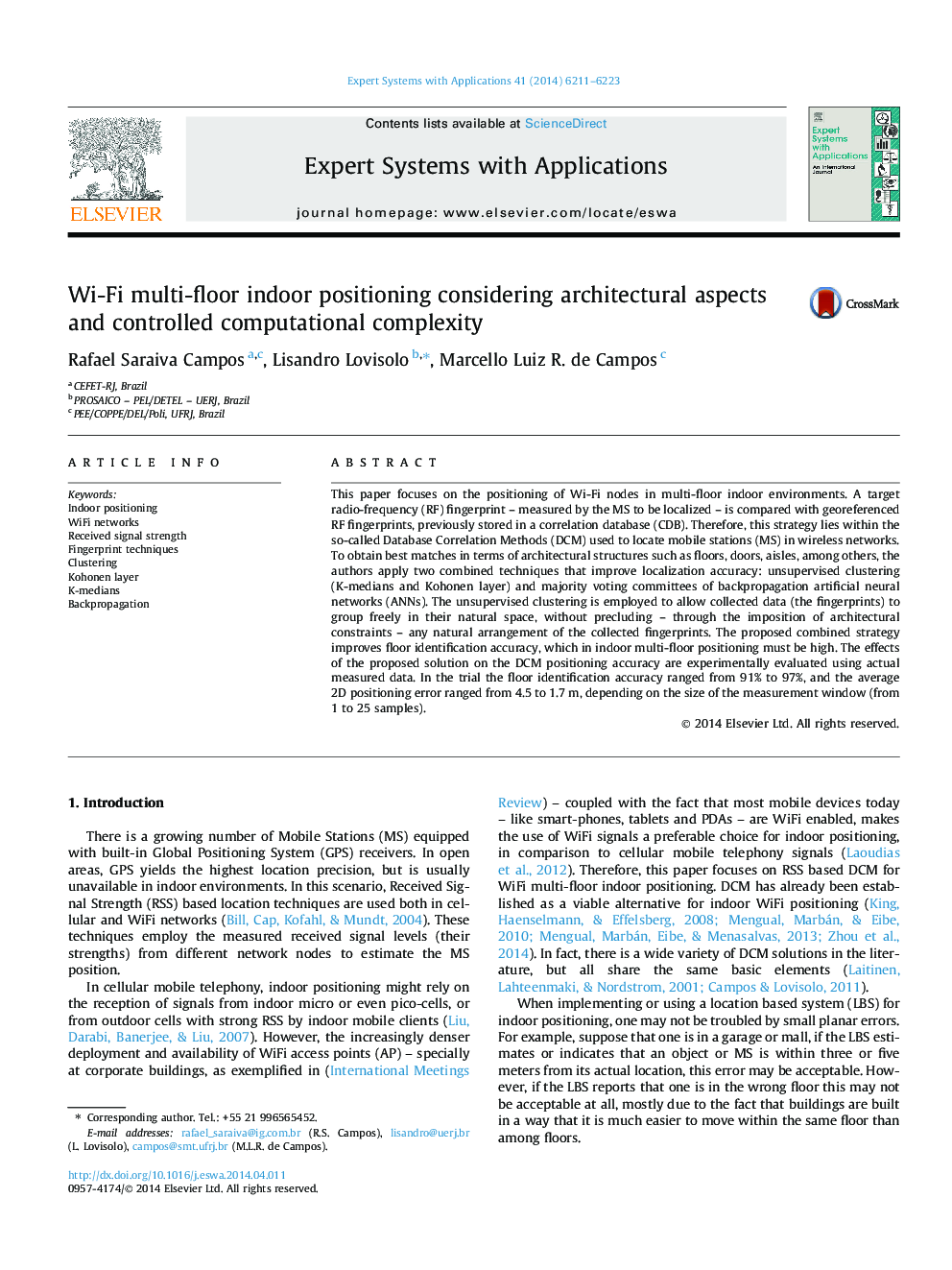| Article ID | Journal | Published Year | Pages | File Type |
|---|---|---|---|---|
| 383631 | Expert Systems with Applications | 2014 | 13 Pages |
•A novel method for the multi-floor indoor positioning problem is presented.•Unsupervised clustering used to allow samples to group freely into the RSS space.•Controlled computational complexity by using clusters with similar number of elements.•High number of samples and floors provide high confidence level for the results.
This paper focuses on the positioning of Wi-Fi nodes in multi-floor indoor environments. A target radio-frequency (RF) fingerprint – measured by the MS to be localized – is compared with georeferenced RF fingerprints, previously stored in a correlation database (CDB). Therefore, this strategy lies within the so-called Database Correlation Methods (DCM) used to locate mobile stations (MS) in wireless networks. To obtain best matches in terms of architectural structures such as floors, doors, aisles, among others, the authors apply two combined techniques that improve localization accuracy: unsupervised clustering (K-medians and Kohonen layer) and majority voting committees of backpropagation artificial neural networks (ANNs). The unsupervised clustering is employed to allow collected data (the fingerprints) to group freely in their natural space, without precluding – through the imposition of architectural constraints – any natural arrangement of the collected fingerprints. The proposed combined strategy improves floor identification accuracy, which in indoor multi-floor positioning must be high. The effects of the proposed solution on the DCM positioning accuracy are experimentally evaluated using actual measured data. In the trial the floor identification accuracy ranged from 91% to 97%, and the average 2D positioning error ranged from 4.5 to 1.7 m, depending on the size of the measurement window (from 1 to 25 samples).
